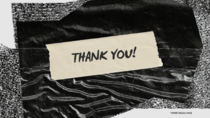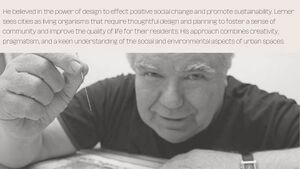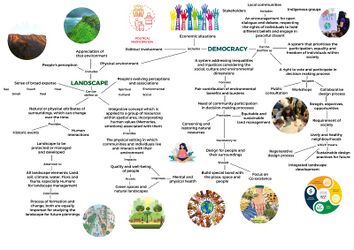Democratic Landscape Transformation 2023 - Team 9
>>> Back to working group overview
>>> Back to seminar reading list
>>> go to the Editing Help
Background of your team
- Please write a few words about your team.
- Which linguistic and cultural perspectives are you representing? Which disciplinary backgrounds?
Tayana: I'm Brazilian and graduated in Product Design in my home country. Then I moved to Hungary to pursue a Masters in Landscape Architecture at the Hungarian University of Agriculture and Life Sciences (MATE). Today, still in Hungary and at MATE, I am a PhD applicant, and my research involves applying design-based learning as a pedagogical method to improve environmental education in learning environments using landscape design as a tool for learning.
Janhavi Deshpande: I am an Architect by profession. I have worked in a landscape architectural studio practicing ecological and economical solutions, based in Pune, India.
Aqsa:
Landscape Democracy Manifestoes
Here you can add links to the manifestoes you have presented on April 26
- Tayana Passos Rosa's Manifesto: Biguaçu https://drive.google.com/file/d/1f91P7HktymC4oKibcAn2sAEMjwJLIBQG/view?usp=sharing
- Janhavi Deshpande's Manifesto: https://docs.google.com/presentation/d/1t_N6ctnv3DY1Yg3kTimram7iTAQimx0Nw8SY6Qol_lg/edit#slide=id.p
- Aqsa Safir's Manifesto: https://drive.google.com/file/d/1MQlUTtE5WjdFP8WrKWCt2yHAEQmLurX8/view?usp=sharing
- add link here.
Examples of Landscape Activism
In the session on May 10, you will discuss examples of landscape activism from your own contexts. You can share the examples in this section (link, image and/or short explanation).
Jeevit nadi- The living river foundation by Janhavi Deshpande
https://docs.google.com/presentation/d/1KVodhLVmJ3NK2QKfPUhC1l0-_bS0ZiUh-WwQNlP0oRg/edit#slide=id.p
Yasmeen Lari(‘It’s not only the right of the elite to have good design) by Aqsa Safir
https://drive.google.com/file/d/1iw_8OTyhI89ma1Jn8uODIuu9yaLWiXuw/view?usp=sharing
- The life and work of Claudia Andujar, by Tayana Passos Rosa
The Role Play
In the session on May 17, you will present a small role play with your team. Please add here a short reflection on what you have learned from this play. The short list of landscape democracy 'movers and shakers' can be found here
For the role play, we decided to work with the Biguaçu manifesto.
https://drive.google.com/file/d/1f91P7HktymC4oKibcAn2sAEMjwJLIBQG/view?usp=sharing
Each group member chose an activist to role play.
Tayana
Activist: Jaime Lerner, was a Brazilian architect and urbanist who was also a politician. He was the mayor of the city of Curitiba and later the state governor. Lerner believes in the power of design to effect positive social change and promote sustainability. He sees cities as living organisms that require thoughtful design and planning to foster a sense of community and improve the quality of life for their residents. His approach combines creativity, pragmatism, and a keen understanding of the social and environmental aspects of urban spaces.
Link to the full presentation with the overview of Lerner's life, work, and the role-playing on how he could address the Biguaçu situation:https://www.canva.com/design/DAFjLoU4oS0/k8ys2ovAGlv_fAr6_nl6sQ/view
Reflection: It was very interesting to learn how different cultures, upbringings, and life's challenges can shape a person's view of the world and how it can influence their way of dealing with challenges. In many cases, the hardships created the activists. Then the different contexts were reflected in the different ways in which problems could be addressed. Top-down solutions when in developed contexts, and the opposite when coming from underserved contexts.
Some highlights for me:
From the phrase shared "Where hope ends, action starts". From my perspective, hope is the most important factor in starting action. Without hope, there is no action. I think it could be replaced by 'discomfort' in the phrase. Hope should not be mistaken for complacency.
Local tacit knowledge should be equally important as academic knowledge. Yes to citizen science and democratic science!
Actions should foster: learning for every part, empowerment, cultural representation, the right to the city, the rights of nature, sustainable development, [...].
Janhavi Deshpande
Activist: Khondaker-Hasibul-Kabir, is a Bangladeshi landscape architect and sustainability advocate who works with Bangladeshi development agencies. He also proposed "The Platform of Hope" (Ashar Macha) in 2007 when he moved personally in with family in the slums and designed a community space.
Reflection: His work is truly inspiring. His idea is to engage with local communities and stakeholders to understand their needs and aspirations. The solutions can be tailored to local contexts and promote social equity. One can develop and implement green infrastructure systems can mitigate flood risks while providing multiple benefits. One can contribute to the revitalization of neighborhoods by designing and retrofitting urban areas to address inequality and flood risks. By designing inclusive parks, streets, and recreational areas, that accommodate people of all ages, abilities, and socioeconomic backgrounds, thereby promoting social cohesion.
Presentation link: https://www.canva.com/design/DAFkC0dKaW4/drBxvubPAcsdSSMlM5gECw/view?utm_content=DAFkC0dKaW4&utm_campaign=designshare&utm_medium=link&utm_source=homepage_design_menu
Aqsa Safir
Activist: Rob Roggema is an esteemed expert in the field of sustainable urban planning and design. With extensive knowledge and experience, he is recognized for his innovative ideas and visionary approach to creating environmentally friendly and resilient cities. Roggema has a deep understanding of the complex interactions between urban systems and their natural surroundings, seeking to develop solutions that harmonize social, economic, and ecological aspects. His work often involves integrating renewable energy, green infrastructure, and smart technologies into urban landscapes to enhance sustainability and livability. Roggema's research and practical applications emphasize the importance of community engagement and collaboration to foster resilient and inclusive cities for the future.
Presentation Link: https://docs.google.com/presentation/d/1YzDvvIHIFQ4njuSaCc43VxhvGzAgYYhE/edit?usp=sharing&ouid=104429945064863032965&rtpof=true&sd=true
>>> All information on the phase B activities is compiled in this PDF
Readings, concepts and definitions
- Start: April 5, 2023
- Due: July 5, 2023
Working in your group, express your personal understanding of the relation of landscape and democracy in the form of a concept map with linking words or any other diagrammatic representation. Please make your maps very visual and not just verbal. Think critically about why one map differs from another
About concept mapping
Before starting the exercise you can read this article by Joseph D. Novak & Alberto J. Cañas about Theory Underlying Concept Maps and How to Construct and Use Them. This paper gives a good explanation of how concept maps are conceived and developed.
You can use any tool you like for producing your concept map. However, since the result needs to be submitted digitally we recommend the following open source software for producing your maps:
- Cmap Tools >>> you can also work with your group on the Cmap cloud doing a shared map
- VUE - The Visual Understanding Environment
Please add your concept map(s) here
- Possible format: JPG (for wiki upload) or link to any other resource
- You may add one map per team member or an integrated one
- add as many additional materials as you need
Please finish with a short reflection
What are the similarities and differences in your team regarding your understanding of what democratic landscape transformation is?
The group came together to discuss the concept maps and each member explained their main view of the relationship between landscape and democracy. The main differences were the main concepts each member highlighted:
- Aqsa highlighted the platforms and how we are creating urban public spaces that are accessible for everyone, and how important the process is to collect feedback and assess the needs of the people.
- Janhavi mentioned about environmental jstice, anthe d how landscape affects vese life of the people. "Landscape f;r all, it includes everyone and everything".
- Tayana mentioned the empowering factor present both in the landscape and in argumentative democratic systems, and how this empowering is important to ensure equality in the landscape, but also sustainable development.
After the discussion, we realized that the main similarity is that we all understand the concept and the importance of the democratic landscape in the same way. We all had the same ideas expressed and the same goal, but from our personal perspectives, ,each of us focused on a singular aspect of this system.
In how far did the seminar lectures and readings help you to clarify this?
- Landscape and Democracy introduces the concept of Landscape and Democracy. Confused at the beginning. The seminar helped clarify the concept and how it is important to respect everyone's perspective.
- The intercultural aspect of the seminar helped broaden the view of different cultures and different perspectives. Really reinforced how important empathy is. And taught us how to visualize and understand different preferences and establish action based on those preferences (referring to landscape design and planning, but not only)
- Respecting people and their opinions. Change of mindset from "I don't care" to "I care".
- It introduced the importance of and the tools for making people collaborate truly and effectively. It can be hard to visualize and achieve.
- Improved confidence about our own opinions and sharing them with others.
What will you take home from this seminar?
- Janhavi: Learnings from the lectures such as Landscape democracy principles, approaches and inclusive methods that we can actually apply at this moment.
- Aqsa: I gain a deeper understanding of the principles and concepts related to landscape democracy, including participatory decision-making, citizen engagement, and equitable access to landscapes. This may involve exploring tools, techniques, and methods for facilitating meaningful participation and collaboration among various groups.
- Tayana: The power of empathy and collaboration. We can always learn, it doesn't matter where, when, or from whom.















